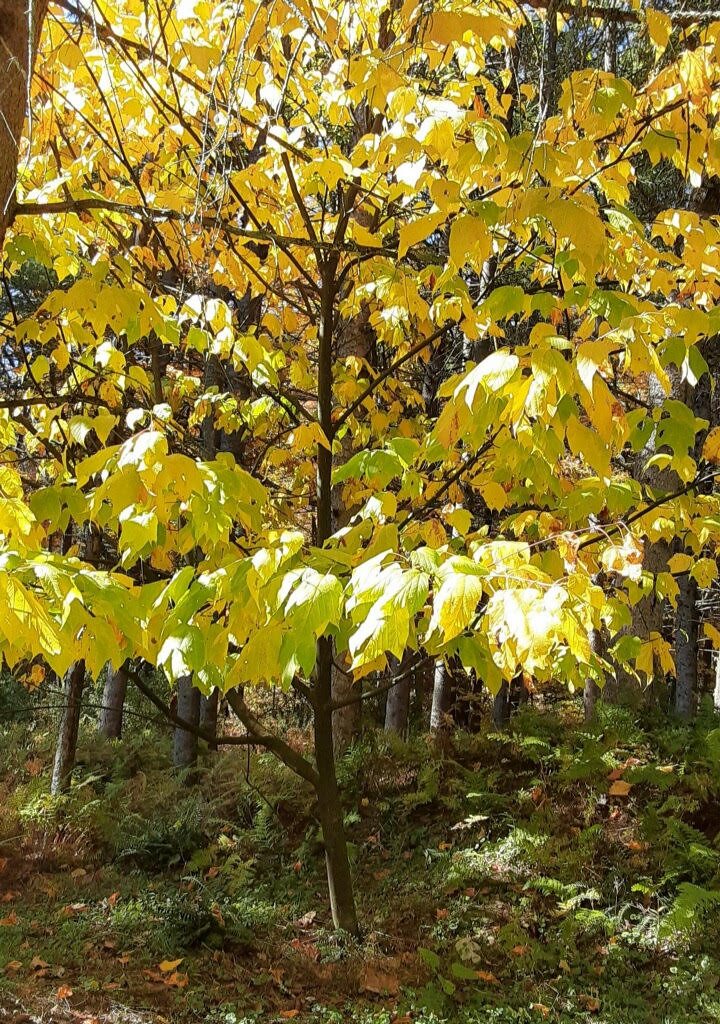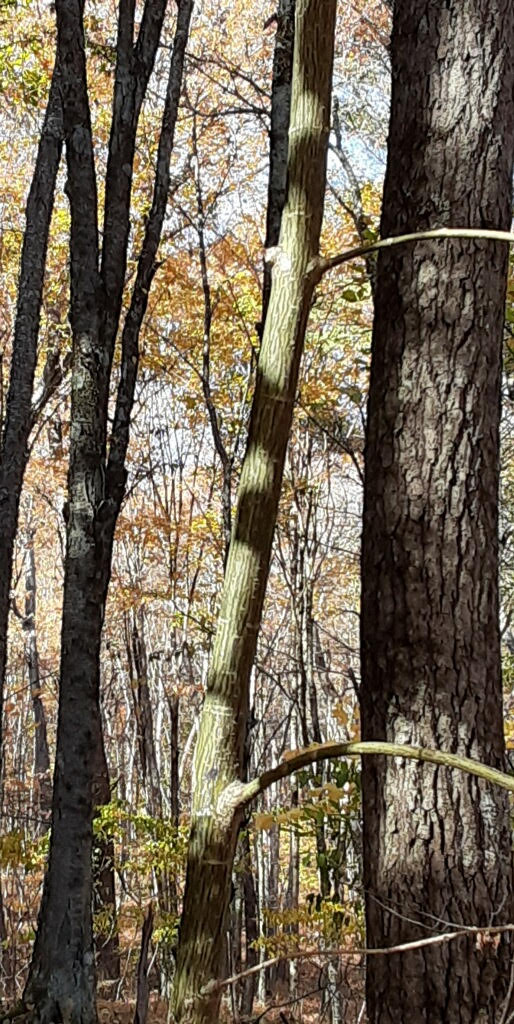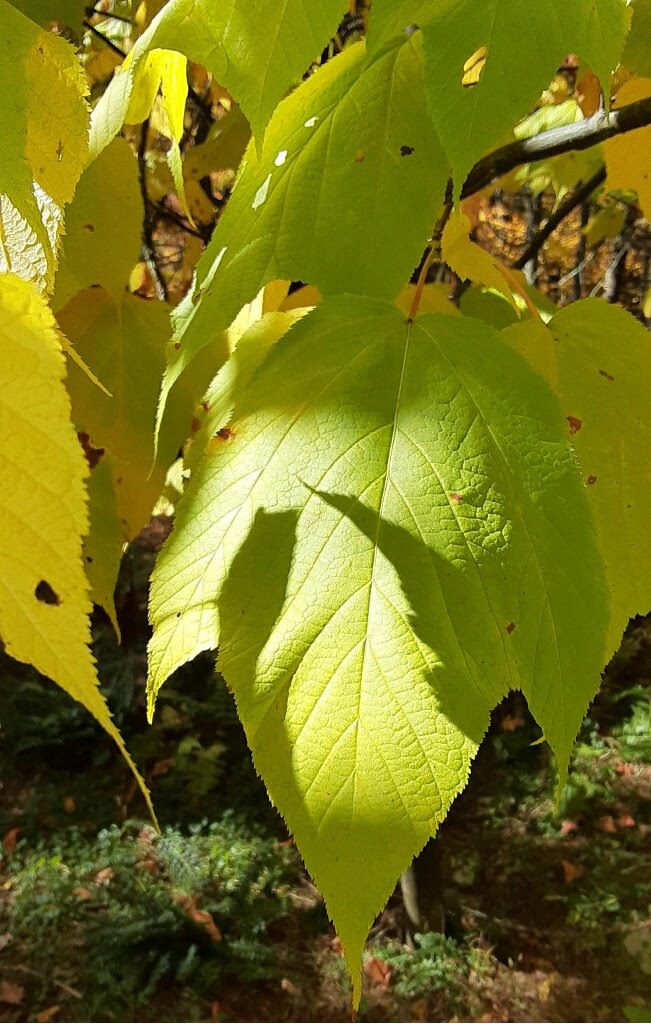By, Susan Sprout
How beautiful the leaves are this fall! Our hills and mountains appear upholstered with green leaves during the growing season. Now with the lessening of sunlight due to shorter days, the leaves have begun shutting down their food production. As the amount of chlorophyll, the green color, slowly fades from the leaves, other pigments in them become visible – xanthophylls (yellows), carotenoids (oranges), and anthocyanins (reds to purples). Sometimes all the colors may be displayed in a single leaf!

Right now, Striped Maples (Acer pensylvanicum) are excellent examples of brilliant yellow. Small understory trees hardly getting above sixteen feet tall, they just shine out like beacons from the shadows under the taller mixed hardwoods where they like to grow. Look for the leaf shape as you walk or ride along the back roads. They differ from the common maple leaves because they are bigger, up to seven inches long as well as across, too. They are three-lobed instead of five-lobed…and the lobes point straight forward instead of out to the side. The pointed tips of the lobes are long and thin. With such a large leaf area, I’ll bet those points act like drip tips to help drain off the rain that beads up on them. The leaf base is rounded where its reddish stem and its three main veins meet together at the bottom. As an understory tree, the development of them is slow, but will accelerate when an opening with more light becomes available. Then they can grow up to thirty feet tall with trunks eight inches in diameter. Their range is from Nova Scotia to the North Georgia mountains and west to Michigan and Ohio. They grow in cool, rocky woods and seem to prefer slopes. At least, that’s where I saw most of the ones I was stalking for a photograph!

The striped part of the common name refers to the easily-identified outer layer of bark that is green with white vertical stripes when the tree is young. It darkens up with time to brown, but those stripes are still quite visible. Striped Maples may live for a hundred years. Indeed, they must be very hardy because they get chewed on a lot. Rabbits, deer, beaver, porcupine, and the caribou and moose populations of our more northerly neighbors, all browse on them at one time or another during the year. Some resources indicate that this type of maple can start to regain twigs and leaves as stump sprouts rather quickly, about two months, after being denuded and trimmed to the roots. Their roots which are shallow and wide-spreading, make the trees strongly competitive for soil moisture and nutrients. Our colonial ancestors fed green and dried leaves of this tree to their cattle in winter and would turn them out early in spring to graze on the newly growing foliage in the woods near their fields. Today, tests are underway to determine if there is a practical application for an active anti-tumor substance isolated from Striped Maples.



Altho native as you noted, striped maple can be invasive/ detrimental to mature forest restoration after a high-grade logging. Their big leaves and fast growth can exclude other species in the aftermath of logging, disease, or insect-damage having opened the canopy…